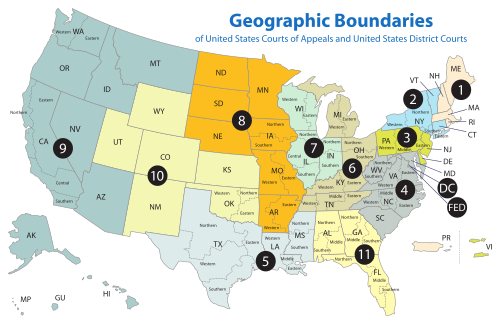This article includes a list of general references, but it lacks sufficient corresponding inline citations .(May 2023) |
| United States District Court for the District of North Dakota | |
|---|---|
| (D.N.D.) | |
 | |
| Location | Bismarck More locations |
| Appeals to | Eighth Circuit |
| Established | November 2, 1889 |
| Judges | 2 |
| Chief Judge | Peter D. Welte |
| Officers of the court | |
| U.S. Attorney | Nicholas W. Chase |
| U.S. Marshal | Dallas L. Carlson |
| www | |
The United States District Court for the District of North Dakota (in case citations, D.N.D.) is the United States District Court or the Federal district court, whose jurisdiction is the state of North Dakota. The court is headquartered out of Bismarck at the William L. Guy Federal Building and has additional locations at Fargo, Grand Forks, and Minot. Appeals from the Court are heard by the United States Court of Appeals for the Eighth Circuit (except for patent claims and claims against the U.S. government under the Tucker Act, which are appealed to the Federal Circuit).
Contents
The district was created in 1889, when the Dakota Territory was divided into North Dakota and South Dakota. The Grand Forks courts are located at the Ronald N. Davies Federal Building and U.S. Courthouse. In 1921, a second temporary judgeship was authorized, however, this was never made permanent and the judgeship expired in 1928. In 1954, a second permanent judgeship was authorized, and the strength of the court has remained unchanged since.
The United States Attorney's Office for the District of North Dakota represents the United States in civil and criminal litigation in the court. As of October 10,2025 [update] , the United States attorney for the District of North Dakota is Nicholas W. Chase.
